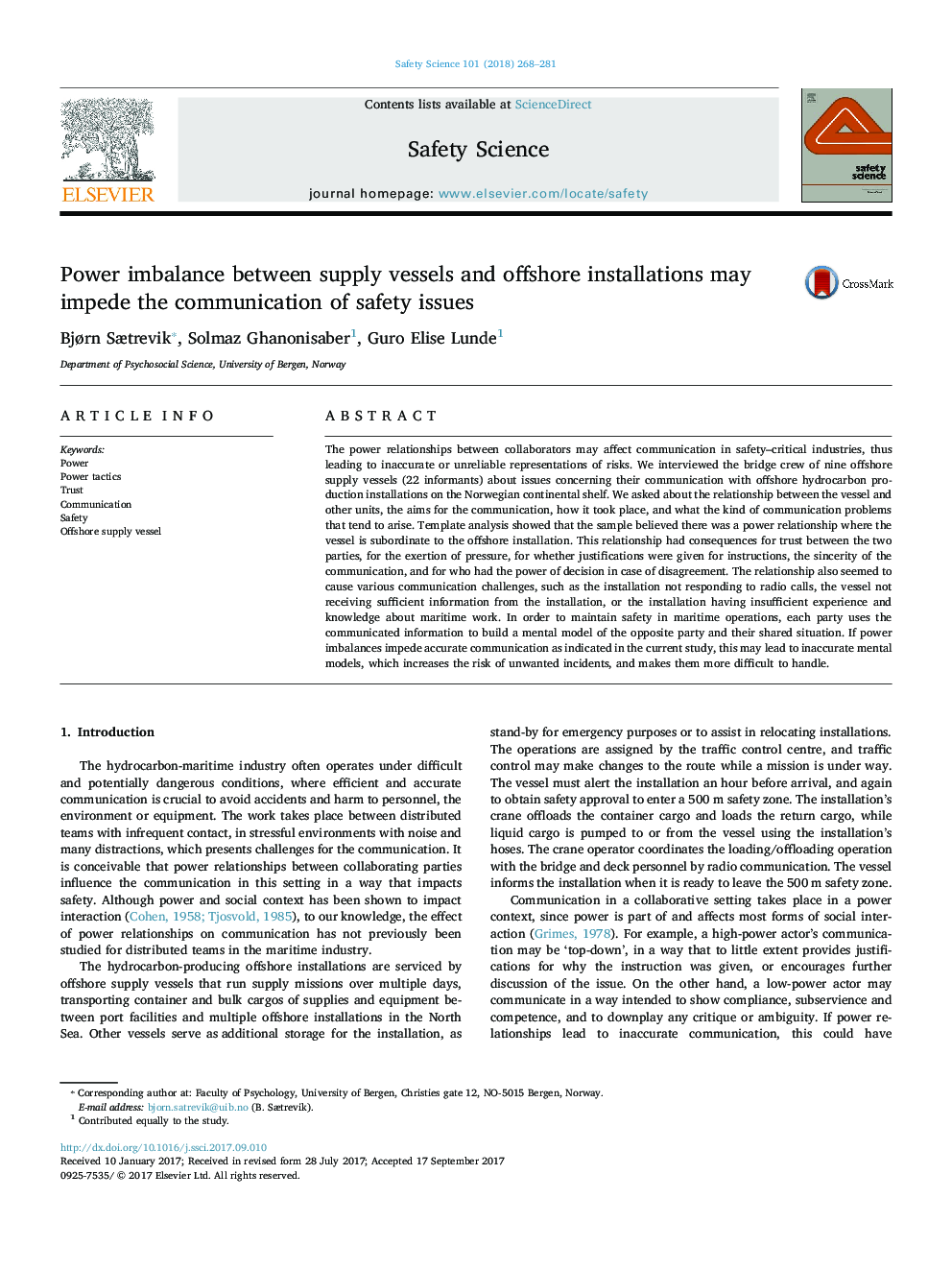| Article ID | Journal | Published Year | Pages | File Type |
|---|---|---|---|---|
| 4981089 | Safety Science | 2018 | 14 Pages |
â¢Nine interviews with 22 bridge officers from different offshore supply vessels.â¢Questions about their communication with offshore hydrocarbon production installations.â¢Power imbalance influences trust, pressure and sincerity in the communication.â¢Communication challenges may lead to inaccurate representation of safety-critical factors.â¢Inaccurate representation may cause accidents or prevent their resolution.
The power relationships between collaborators may affect communication in safety-critical industries, thus leading to inaccurate or unreliable representations of risks. We interviewed the bridge crew of nine offshore supply vessels (22 informants) about issues concerning their communication with offshore hydrocarbon production installations on the Norwegian continental shelf. We asked about the relationship between the vessel and other units, the aims for the communication, how it took place, and what the kind of communication problems that tend to arise. Template analysis showed that the sample believed there was a power relationship where the vessel is subordinate to the offshore installation. This relationship had consequences for trust between the two parties, for the exertion of pressure, for whether justifications were given for instructions, the sincerity of the communication, and for who had the power of decision in case of disagreement. The relationship also seemed to cause various communication challenges, such as the installation not responding to radio calls, the vessel not receiving sufficient information from the installation, or the installation having insufficient experience and knowledge about maritime work. In order to maintain safety in maritime operations, each party uses the communicated information to build a mental model of the opposite party and their shared situation. If power imbalances impede accurate communication as indicated in the current study, this may lead to inaccurate mental models, which increases the risk of unwanted incidents, and makes them more difficult to handle.
